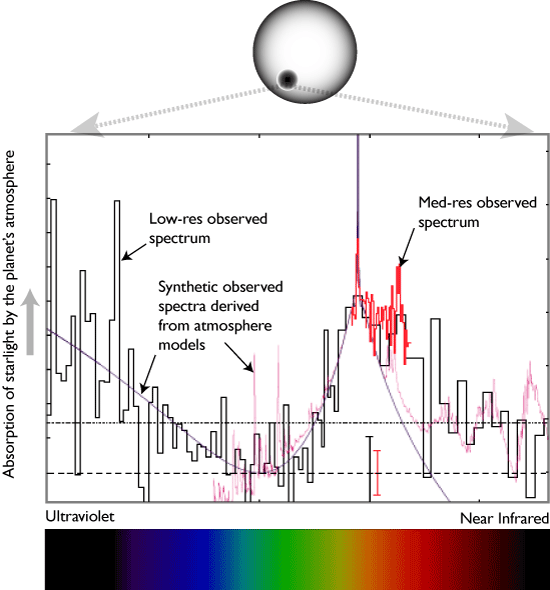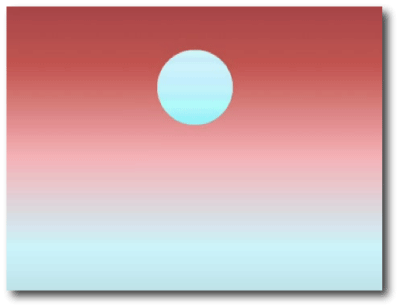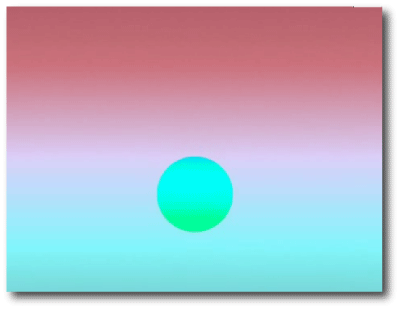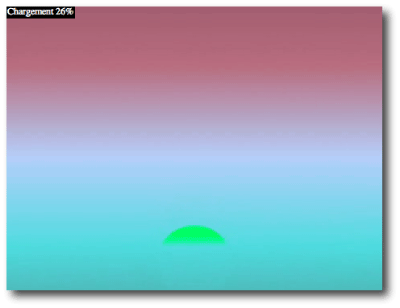
During my visit to the Paris Observatory earlier this summer, Alain Lecavelier showed me the work that he and David Sing and their collaborators have been doing to get a better handle on the atmospheric conditions on HD 209458b. Using the STIS spectrograph on HST, they’ve obtained both medium-resolution and low-resolution visible-wavelength absorption spectra of starlight shining through the atmosphere of the planet as it transits the parent star.
HST is sensitive enough to allow startlingly detailed portraits of “sunsets” that took place back in the mid-1850s. Here’s a reworking of Figure 1 from Sing et al. (2008):

Illustrator-editable .pdf of above with title and source.
Sing et al. manage to do a good job of matching the features in the spectrum. The big absorption spike in the orange is due to the presence of atomic sodium. Their atmospheric models also include Raleigh scattering by hydrogen molecules, a temperature inversion in the atmosphere, condensation of sodium sulfate on the planet’s night side, and the presence of titanium and vanadium oxide in the atmosphere. (Titanium oxide can be invoked to play a big role in modulating the visual appearance of hot Jupiters for much the same reason that it’s used as an opacifier in ordinary paint.)
With a detailed atmospheric model in hand, it’s possible to calculate both the color of the sky and the color of HD 209458b at various sight lines through the air column. David and Alain did exactly that, and have made an animation from the perspective of an observer in an asbestos-coated balloon drifting nightward across the terminator. The effect is reminiscent of a Turrell skyspace:



Here’s a link to their French-language press release. According to the inimitable google translator, “star at bedtime absorption is cyan”

Is there a link to the animation?
The fading to cyan near the horizon is really bizarre. What’s responsible for that?